Historic Masjids of Mangalore
Historic Masjids of Mangalore
Mangalore Today News Network
By I J Saldanha Shet
Mangalore, May 30, 2014: Mangalore thrives on worship of the GODs, no doubt! At every nook and corner historic Temples, Mosques, Churches can be found. Among others a recent addition is a Gurudwara. The history of Mangalore connects with different regions, languages, faiths and religions ancient, multi faceted and overlapping. Taking a look at an ancient Mosque - probably oldest in the region - in Bunder - the heart root of old Mangalore is indeed very enriching and thrilling.
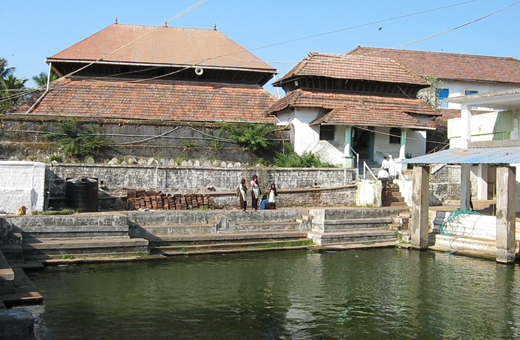
The original roots of real old Mangalore run between Sharavu Ganapathi Temple in Kodialbail and Mangaladevi Temple in Bolar. The famed Muslim Ruler of the Mysore Tipu Sultan, is known to have a role in the development of Sharavu Ganapathi Temple, according to a well known historian A M Prabhu, who has authored books on Tipu history - a strange dream while he camped nearby caused him to donate land for the Temple. Tuluva and local rulers are known to have protected Muslim/Arab traders in ancient times and have given them free passage through their kingdoms, much before westerners were heard of in this area. Western rulers too established close trade and cultural ties with Muslim kingdoms and have provided space for their life style. It is evident that there has been much intercourse between cultures and beliefs for ages past creating a mosaic that is inseparable in and around Mangalore and beyond. A deeper look at the oldest Masjid of Mangalore and connected historic auxiliaries will enlighten the intricate mosaic, these are perhaps just a sample of many more.
Zeenath Baksh Masjid, Bunder, Mangalore
This historic mosque is referred to as "Juma Masjid" and "Beliye Palli", it is right in the middle of ever bustling Bunder, the old port locality sandwiched between Golikatte Road and Port Road, just a stone’s throw from the Gurpur river and North warf to its West. Here, a wide range of commodities and condiments are traded. The area seems in chaos with old dilapidated buildings amid newer ones and the narrow lanes choked with heavy traffic of all descriptions. Ones olfactory senses will be tested with multiple oriental aromas of spice, coffee, areca, pepper, cardamom, chilies, garlic, ginger, rice, pulses, onions, potatoes.............. and all kinds of condiments retail and whole sale. A trader ’M M Kini’ opposite the mosque is a licensed dealer in arms and ammunition, it is an old family business, he says. This unique and antique mosque is round the corner from the Bunder Police station and the famous old renovated ’Bombay Lucy Restaurant’ well known to local folks. The ’Kanara Chamber of Commerce and Industry (KCCI)’ is located a few yards away. Bunder, the old Port of Mangalore, since ancient times is the back bone of communication and commerce with thriving sea ports and even the Lakshadweep Islands with which it shares a long history. The business people around are of a very friendly and of easy going enthusiastic nature it seemed. A visit here is like going back in time and also tripping over the new order of life and faith.
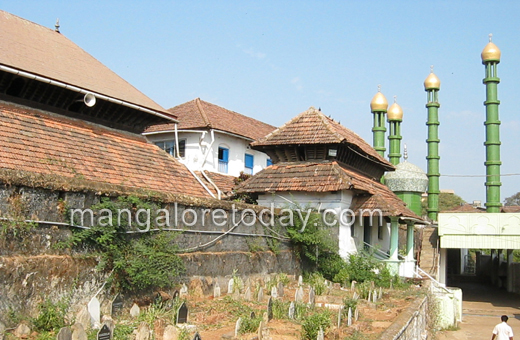
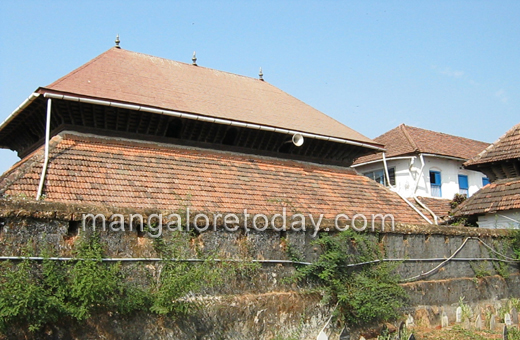
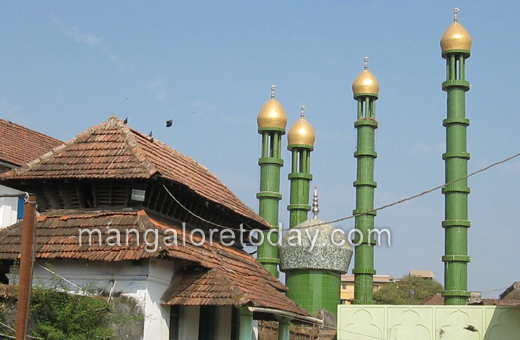
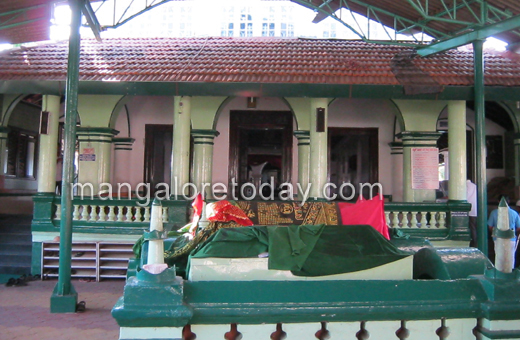
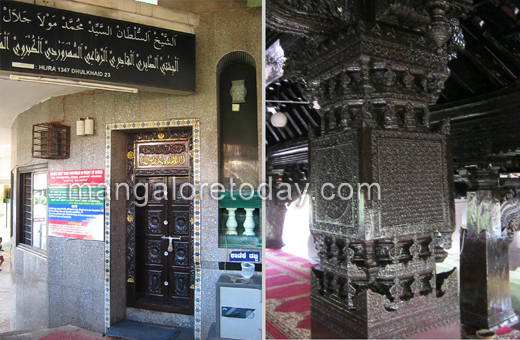
The Masjid Zeenath Baksh in Bunder is said to have been established in Mangalore in 644 A.D. First established in Mangalore by Habeeb bin Malik and the first Qadhi(Qazi) appointed was Hazarath Moosa Bin Malik, son of Malik Bin Abdullah. This Mosque was probably inaugurated on Friday the 22nd of the month of Jumadil Awwal (fifth month of the Islamic Calendar) in year 22 of Hijra (644 AD). That this sacred Masjid was established by the Holy men of Arabia, who were said to be Kith and Kin of "Sahabas" (Associates) of "Prophet Hazarath Mohammad Rasulallah".
The ’Zeenath Baksh Mosque’ is indeed unique. The front portion (with a prayer hall on two levels) is no doubt added on in the 19th century (later too) and the tile roof has ’Basel Mission’ Tiles too, another structure constructed later has four minarets and a typical dome and houses the 87 year old tomb of Hazrath Sheikuna Muhammed Moula Jalal Masthan Al Bhukhari a saintly Khazi laid to rest here. Many young people come here to pray and find their lives changing towards good. Also some of his kin’s tombs can be seen. Construction works are in progress now.
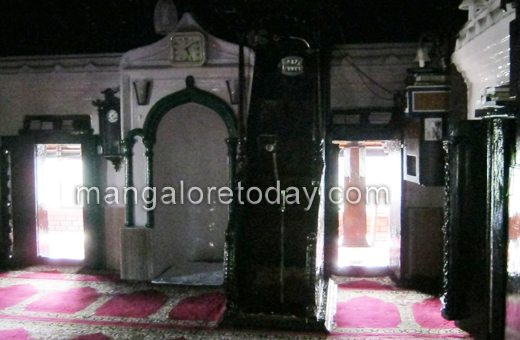
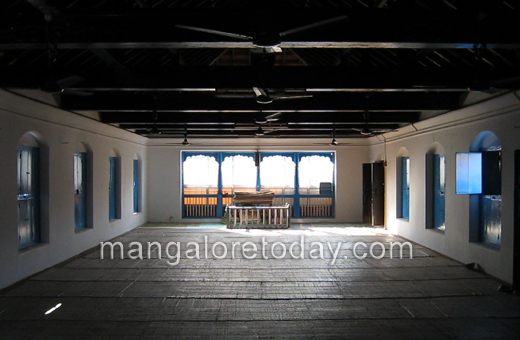
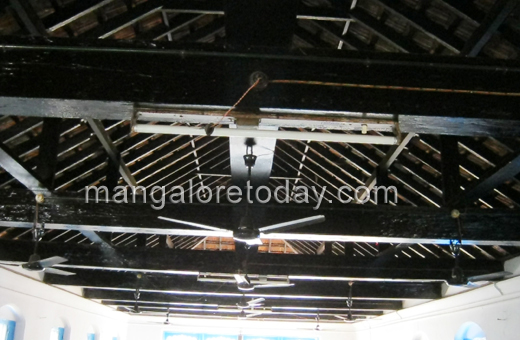
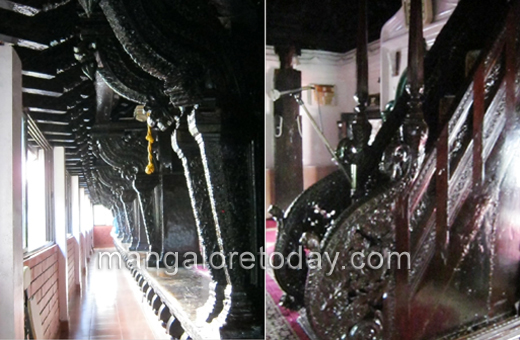
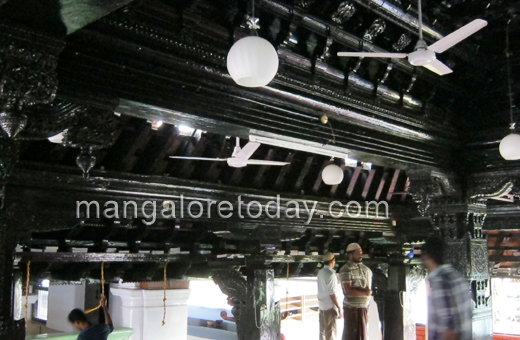
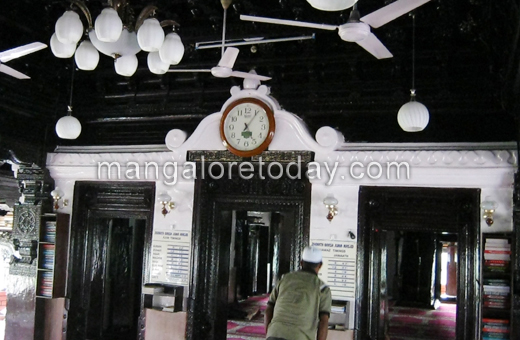
The inner ancient original mosque dates back by centuries perhaps and this old legend of a "Masjid’ in 1780’s said to have been refurbished and renovated systematically by the great Tiger of Mysore Tipu Sultan who is well known for such philanthropy. Any one with a basic knowledge of layouts in the region cannot fail to recognize that this great monument which spreads over a large area has many characteristics of a temple - the large water tank (below ground level), the shape of the tiled roof (old Malabar) , and the hand carved wood work (characteristically local). Tipu added beautifully carved bulky rosewood pillars and also a carved ceiling, the huge carved works are majestic. The mosque was renamed after Tipu’s daughter ’Zeenat Baksh’. The prayer hall is on a plinth with an open colonnade running around the building under heavy overhanging eaves with carvings. The renovation coexists in harmony with the older, more ancient staccato structure. The water tank in the center of the premises has granite steps and provides water for the ablutions or ’Wuzu’ prescribed before ’namaz’. This Juma Masjid is well frequented by devotees for regular five times Namaz and to visit the tombs. There is also a burial ground that partly encircles the Mosque. One can see men and women frequenting this holy place, on festival occasions this mosque can hold about 2000 people for the Namaz or prayer assembly. During Ramadan fasting and festivals the religious spirit is at a peak and exemplary. Tippu Sultan has also built a Masjid at Mangalore 2 .k.m away from this Mosque, it is presently called as "Idgah Masjid" at the top of the hill (now called Light House Hill, in the town center near Aloysius College). Muslims from all over the district gather here and offers prayer on festive days of Id-Ul-Fitr and so on. Subsequently in the year 1920, Mangalore ’bail’ family constructed a large assembly hall or ’Jamath Khana’. There are a good number of Muslims in Mangalore and their concentration in this area is phenomenal. "He is the One GOD; the Creator, the Initiator, the Designer. To Him belong the most beautiful names. Glorifying Him is everything in the heavens and the earth. He is the Almighty, Most Wise." (Quran, 59:24 )
BEARY COMMUNITY IN MANGALORE
The origin of the ’Beary’ Community is very ancient and little trace is found. History reveals that there were many rich traders, from the Malabar coastal belt, dealing with the traders of the Arab lands over the Arabian Sea. Arab merchants have been visiting the coastal regions for business purposes even before the time of Muhammad (puh), the prophet of Islam. Most local Muslims in this region are part of the Beary Community.
The Beary (also known as Byari) is a community concentrated mostly along coastal Dakshina Kannada and Udupi districts in the Southern state of Karnataka. It is an ethnic group, having its own unique traditions and distinct cultural identity and language. The Beary community holds an important place among the other coastal Muslim communities, like Nawayath’s of the Uttara Kannada district (who speak a type of Konkani), Mappilas (Moplahs) of the Malabar coast (who speak a form of Malayalam) and Labbay of the Coromandel coast (who converse in Tamil). Note that Bearys incorporate the local Tulu culture of undivided South Kanara and diverse traditions of the Moplahs of the Malabar. The Beary community of Kanara or Tulunadu is one among the earliest Muslim inhabitants of the coast, with a clear history of more than 1350 years. Muslim Arab traders had a cordial relationship with the rulers of the western coastal belt of India. This is attested to also by the writing of Ibn Batuta, the intrepid North African traveller who passed through India in 1342.
The word ’Beary’ is said to be derived from the Tulu word ’Byara’, which means trade or business. Since the major portion of the community was involved in business activities, particularly trading, the local Tulu speaking majority called them as Beary or Byari, other reasons too exist. According to the census of 1891, South Kanara in the Madras Presidency of British India had 92,449 Muslim businessmen consisting of 90,345 Bearys and 2,104 Nawayaths involved in business activities. The first Muslim missionaries to Mangalore can be traced to Malik Bin Deenar, an Arab trader said to be the kin of Sahabas (companions of Prophet Muhammad). He is said to have visited Malabar and landed near Manjeshwar on the northern Malabar coast, very close to Mangalore. He constructed the first Masjid in Kasargod, the Malik Dinar Masjid ( his shrine can still be seen ).
Beary Language: Called ’Beary Basse’ is spoken by the Muslim communities mainly along the Coastal Dakshina Kannada, Udupi and in some parts of Kasaragod district by the Bearys (Byaris). Beary is a language of mixed idioms, phonology and grammar of bothe Tulu and Malayalam. It is considered a dialect since Kannada alphabets are used in writing is also known as ’Mappila Bashe’ because of Bearys’ close contact with Mappilas of Malabar. Due to the intensive influence of Tulu for centuries, it is today considered as a language close to Tulu as well. Surrounded by Tulu speaking community, the impact of Tulu on the phonological, morphological and syntactical structure of the dialect is evident. Beary Bashe can be related to Malayalam, Tulu or Perso-Arabic origin with Arabic influence. ’Beary Basse’ also has words related to Tamil and Malayalam. Tamil and Malayalam Speakers can understand Beary to some extent.
The Bearys produced rich literary work using both Beary Bashe and Kannada language. The literature comprises Beary poetry, research articles on Bearys, historical analysis of Muslims, essays, stories and other fields of literature. "English-Kannada-Beary" dictionary is now available. The Bearys have also produced a number of magazines and periodicals from Mangalore and other places of the region. Some periodicals have become popular and a few of them have become a part of Beary history. Generally Kannada script is used to produce Beary literature which is quite popular and abundant in all possible forms.
Present Activity of The Masjid: Considering the needs of the economically weaker people of the community, the Management Committee of the Mosque has made initiatives to extend free service in various ways for the needy people of the community. Funds are raised from benevolent donors of the community for the purpose of marriages, education, medical relief, shelter and other social basics. Also the Management Committee of this Mosque looks after burial of destitutes free of cost. Efforts are on by the leaders for establishing and running schools and colleges from KG to PG for the benefit of the wider community who are rapidly marching forward in all spheres of activity.
Woman Saint’s Dargah in the Heart of Mangalore
Hazrath Saidani Bibi Sahiba, the only dargah dedicated to a woman saint in Dakshina Kannada has become a refuge of hope irrespective of religion, caste, creed or language. It is located near A B Shetty circle, on the periphery of the prominent ’Big Maidan’ (as it was then known) now, Nehru Maidan of Mangalore. This dargah (memorial tomb shrine) is visited by people of all faiths. Most of the people come here with a ’harake’ (vow) as there is a strong belief that prayers are answered here. Hazrath Saidani Bibi, it is said was a saintly lady, hailing from a ’Fouji’ (Military) family during the regime of Tipu Sultan. She was buried in the military area (the present location of dargah on the edge of the City Police HQ - formerly the military barracks), though burial grounds were available, such was her reputation. People say that she was buried in the military area due to high respect and regard the local people of Mangalore particularly the warrior class had for her. Later, her close relatives were buried beside her. Now are seen three other tombs apart from that of Sayyadani Bibi in the dargah. Scores of people of all castes and creeds visit this place every day, giving alms to the poor who sit at this place, an accepted practice.
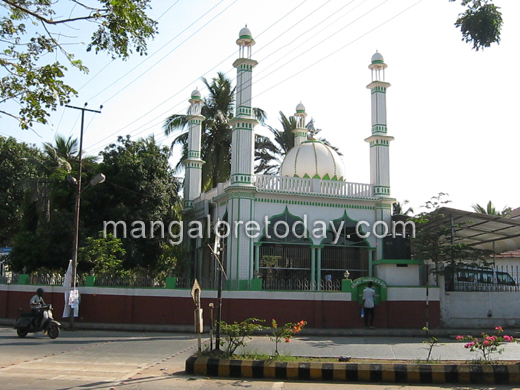
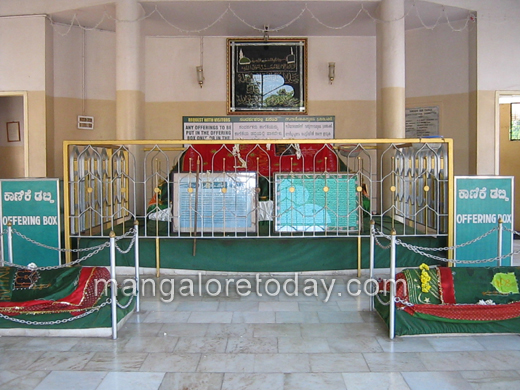
Another astonishing aspect of this dargah is that it is cared for and protected by retired or serving police officers of Mangalore. Hazrath Saidani Bibi Sahiba Dargah Management Committee is in the fore front of it’s maintenance. This dargah was frequently visited by the police staff and public, the tomb is adjacent to the police headquarters. In 1972, the then Dakshina Kannada SP K U Balakrishna Rau and the then Assistant SP H T Sangliana entrusted the administration of the dargah to Muslim police personnel. A committee was formed for the better administration of the dargah and in the year 1983 the old ’Mazahar’ (tomb of the saint) was renovated. The dargah was built on land belonging to the Police department, and the property was later handed over to the Wakf Board. Indeed goodness knows no boundaries and so does harmony.
Kutchi Memon Masjid, Bunder, Mangalore
This is another ancient Masjid just near and on the way to Zeenath Buksh Masjid right opposite to famed ’Bombay Lucky Restaurant’; the ’Kanara Chamber of Commerce and Industry (KCCI) is in the back yard of this Masjid. It is also referred to as ’Katchi Palli’. It is a wonder for this Mosque is credited with many firsts. Traditionally each of these many Masjids in Mangalore have their own section of regular devotees. Reliable sources say that Kutchi Memon Masjid was basically constructed in 1839 and is now 174 years old going on to be 175 years. The force behind this sacred work were Patels from Kutch in North Gujarat, traders who settled in the area and were masters in the spice trade, they spoke Kutchi language and gradually were assimilated into the Kanara culture, the cause of this development are the historical sea routes to Mangalore from the Arabian Sea. To and fro activity is still very visible it appears.
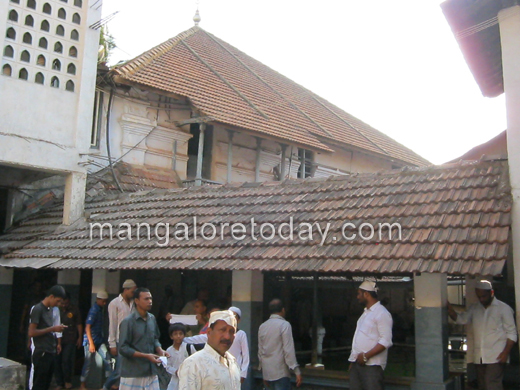
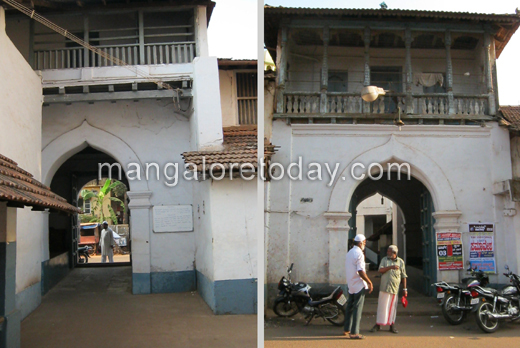
The wonders at this religious center are: It was the first to get power supply and the fourth in Mangalore to be electrified in the British era, in 1930s , the first to use loud speakers for the ’azaan’, call to pray and in Urdu, the first where the ’qutba’ (Friday Sermon) was delivered in Urdu and so on.
There has been development in the precincts of the masjid but the original structure on about 20-25 cents remains still very original. The new extension was first made in 1983 and plans to expand are on going. The unique gate way into the masjid has a picturesque oriental architecture. Indeed this area called Bunder is a wonder with many historic monuments still standing the test of time like sentinels spelling out the historical times gone by and hoping for better times for those who are to come.
- Substance abuse - A pressing concern among medical students
- China is winning the trade war without fighting
- Poll promises can become political nightmares
- While India sticks to death by hanging other execution methods vary across the world
- Spiking of drinks, a grave threat for students’ security
- Burden of drugs and substance use among university students in India
- Mangalore medic’s miracle in Bombay 1957
- Needed a national protocol for treatment of substance use disorders
- The Lingering Menace of Drug Abuse Among the Indian Youth—It’s Time for Action
- Need For ‘Students, Alcohol and Drugs’ survey
- New Synthetic Drugs Trapping Youth
- Mood Modifying Chips - Future of Drug Use
- Ramping up Indo-Bangla border security
- Kashmir Bhavan in Bengaluru: A must visit place
- "MAI and I" Book of Angelic Emotions
- Draupadi Murmu - The New ’President of India’
- Anthony Ashram in the city grows a classic museum
- First College of Fisheries in India - A Golden Jubilarian
- Flushing Meadows - A Vintage Mansion
- The Colonel�s Bequest
- A Mangalorean PM and his RBI Governor Brother: The Extraordinary story of the Benegal Brothers
- There is no higher religion than Truth: Theosophical Society
- L�affaire - Ashu & Yiju of Mangalore
- Mangalore in Kowloon
- 1568 to 2018 AD: 450 years of Christianity in Mangaluru
- Vice President elect Naidu moves on from nadir to zenith, the phenomenal journey
- Embracing the Outdoors: How Heated Jackets Are Revolutionizing Cold Weather Activities
- Efficient and Sustainable Packaging Solutions with FIBCs
- The Hybrid Kilt Revolution | Where Tradition Gets Trendy
- Affordable Elegance | Embrace Style on a Budget with Cheap Kilts
- Unleashing Style and Functionality | Exploring Tactical Kilts
- Mangalore’s Heroic Lady marks 105th Birthday
- Santa the Christmas spirit
- Geriatric care: Mangalore strikes a fine balance
- The Don Who Made Two Empires to Clash
- CHITRAPUR SARASWATS - A Great Kanara Community
- Our new President Ram Nath Kovind’s significant journey to Rashtrapathi Bhavan
- Marriages made in heaven, big fat weddings made in India
- Eid insight - The giver of glad tidings
- CITY INFORMATION
- TRAVEL
- TOURIST INFORMATION
- HEALTH CARE
- MISCELLANEOUS




 Write Comment
Write Comment E-Mail To a Friend
E-Mail To a Friend Facebook
Facebook Twitter
Twitter  Print
Print 

